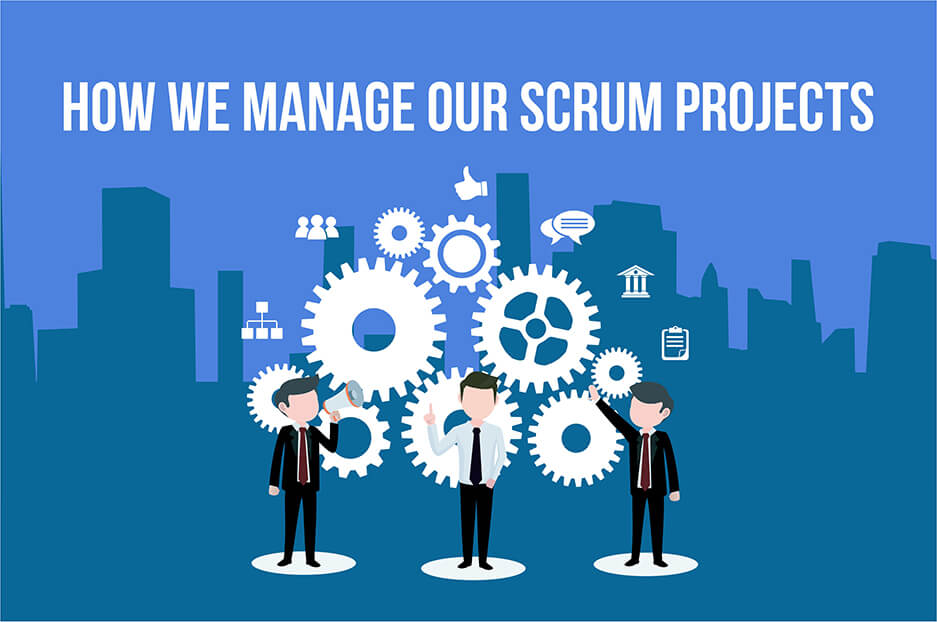As we are a web development company, we work with web projects every day and can tell a lot about them. We want to bust the project management myths, if there are some you still believe in, and give you more insights on how we manage our Drupal projects and how we will manage yours.
Before any our web project starts, a PM should decide: What project management methodology to choose? Which one is the most appropriate in a given case? We use many in our practice, basing our decision on the project scale and complexity and pricing model. In this blog post, we’ll focus on Agile, which is more flexible than Waterfall. Many business giants appreciate this methodology too. For example, Agile is used by Apple and Philips, Nokia and Intel, Microsoft and Exigen Services. We’ll describe how we organize our work according to Agile principles, how we use Kanban dashboards and Scrum sprints.
As this methodology presupposes client involvement and face-to-face communication between the stakeholders and developers during the whole process, this article will tell you what you should expect if you are going to hire a web development team to work on your large-scale project.
Phases of Scrum web development
Product backlog
A list of web resource features that should be implemented as the result of the whole web development process is called a product backlog. Each list element is called a user story and has a unique ID number.
Sprint estimation and sprint backlog
A sprint is a basic part of Scrum web development process. It is a repeatable work cycle, which can last from a week to a month. When determining sprint’s duration and cost, there are some risks of both overestimated and underestimated sprints. So, we try to reach a golden mean.
After estimation, a scrum team creates a sprint backlog, based on user stories that should be completed by the end of a sprint.
Task board
To track the working process, we create a dashboard using Jira or Teamwork service. Each user story has to come through a few stages, visualized on the task board in columns named “To Do,” “In Progress,” “QA testing,” and finally “Done.”
Scrum meetings
Everyday Scrum ceremonies allows us to control the project progress. For example, backlog grooming serves to clarify the user story to avoid misunderstandings. During daily stand-ups each team member tells what they had done, what problems faced and what task is going to do next. Daily team meetings help the team better understand the current situation and see what changes are needed and how to set up a future workflow in accordance with the newly received information.
Testing
As was mentioned above, “QA testing” is one of the board columns and stages obligatory for every user story. Since the client and end users need a fully functioning web product, the meaning of QA is significant. Testing in every sprint allows the team to detect possible bugs and get rid of them before product release.
Product demonstration
After testing, there comes a demo — a demonstration of the sprint results, namely the autonomous product part that is ready. A feature that has been built and tested is presented to the customer, who then says whether the team is moving in the right direction and shares their suggestions for further changes to the project.
Retrospective
Last but not the least comes the retrospective for the sprint. It is the time to work on errors, summarize the sprint results and provide feedback. We use Burndown charts to visualize the lag or advance and analyze the reasons for the deviation from the plan. Knowing how to do a retrospective right allows us to avoid the same mistakes during the next sprints, and in this way we optimize the whole web development process.
Iteration
When the sprint is completed, we proceed to planning the next one. Iteration is a distinctive sprint feature. This project stage is repeated until all of the user stories will be done. The output of each sprint is a potentially shippable product increment. After the last sprint is over, the finished product is demonstrated to the stakeholders.
So, that is how we manage our Agile projects using the elements of Scrum methodology to satisfy large projects needs. If you have an idea for a long-term development process, our website development services company will make your dream come true — just let us know.

